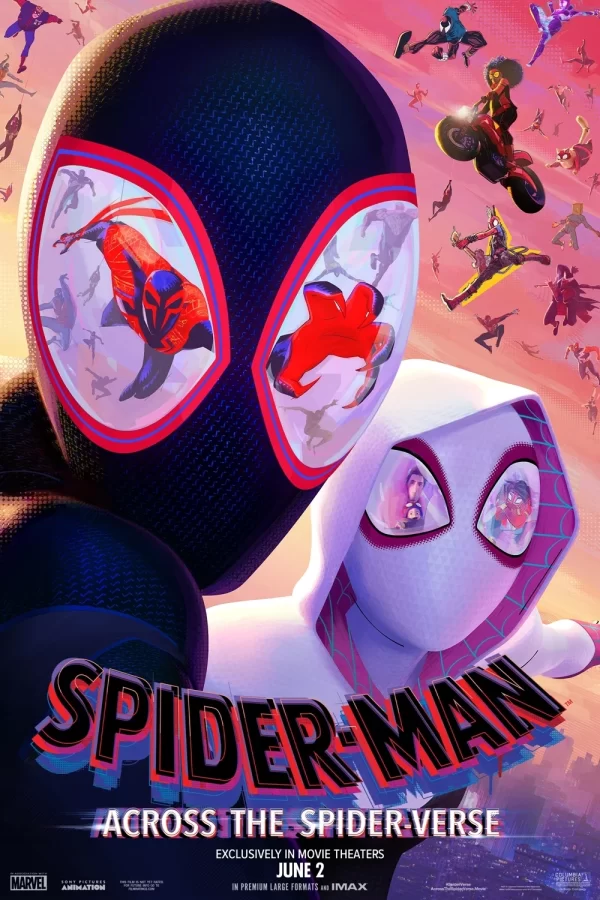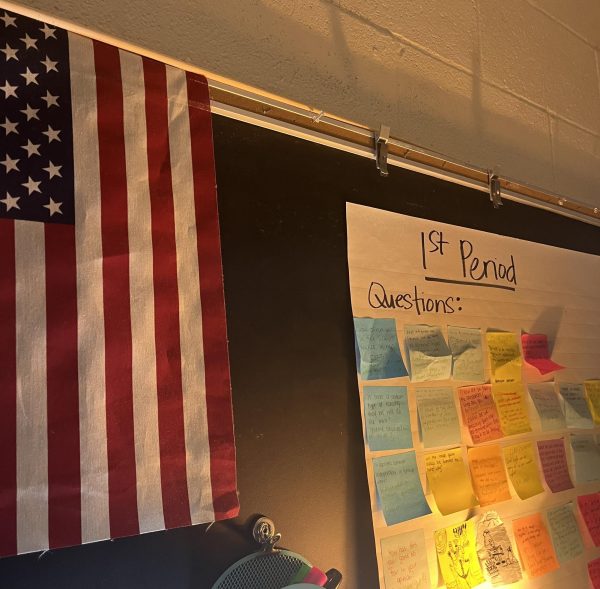“Spider-Man: Across the Spider-Verse” Review
The amazing Spider-Man indeed, Miles Morales swings into the greater Spider-Verse in this fantastic sequel.
Released on June 2, 2023, “Spider-Man: Across the Spider-Verse” follows up 2018’s “Spider-Man: Into the Spider-Verse”, which won the Academy Award for Best Animated Picture. Produced by Sony Animation, it’s continued to do well at the box office since opening weekend. It features the voice talents of Shameik Moore, Hailee Steinfeld, Oscar Isaac and Jake Johnson.
“Spider-Man: Across the Spider-Verse” expands on the themes and world of the first movie. The animation is groundbreaking and the music compliments the film. “Spider-Man: Across the Spider-Verse” is worth seeing on the big screen.
Without spoilers, “Spider-Man: Across the Spider-Verse” picks up over a year after the events of “Spider-Man: Into the Spider-Verse.” Miles Morales is his universe’s one and only Spider-Man, struggling to balance his double life. Meanwhile, Gwen Stacy is working with a team of inter-dimensional Spider-People with the goal of protecting the multiverse. When Miles finds himself amongst this team, he must redefine what it means to be Spider-Man to save the people he loves.
Like most good sequels, “Spider-Man: Across the Spider-Verse” expands on the themes and world of the first movie. While the first movie explores the idea that anyone can be Spider-Man and the classic message with great power comes great responsibility, the second movie explores the costs of being Spider-Man. Miles’ relationship with his parents struggles as he keeps his identity a secret. When we enter the multiverse, we see the tragic commonalities across each Spider-Man’s life. These themes were touched on in “Spider-Man: Into the Spider-Verse” but they take center stage during “Spider-Man: Across the Spider-Verse.” Few sequels manage to justify their existence, but “Spider-Man: Across the Spider-Verse” is a successful addition to the franchise.
Some could argue the film feels incomplete as it leaves off on a cliffhanger. However, “Spider-Man: Beyond the Spider-Verse” is set to be released on March 29, 2024. Movie-goers have less than a year to wait.
In 2018, “Spider-Man: Into the Spider-Verse” revolutionized western animation, with its comic book stylization and creative use of the medium. After “Spider-Man: Across the Spider-Verse,” studios began playing with the medium of 3D animation. A recent example would be “Puss in Boots: The Last Wish,” its animation resembling a painting. One thing movies have borrowed from “Spider-Man: Into the Spider-Verse” is making use of frame rate. Twenty-four frames-per-second is standard in animated movies and television. “Spider-Man: Into the Spider-Verse” increased or decreased the frame rate based on the scene, famously being done to make Peter B. Parker’s web-slinging look experienced compared to Miles’ clunky decreased frame rate.
In 2023, “Spider-Man: Across the Spider-Verse” continues this trend of advancing animation. The character Spider-Punk took several years to animate. His guitar, leather vest and border were all animated at different frame rates. Beyond use of frame rate, “Spider-Man: Across the Spider-Verse” is visually stunning. Gwen’s Earth resembles watercolors. As her emotions change, the colors of the scene change. The Spot, a character with the ability to open portals, has pencil lines visible in his character model, showing his incompleteness.
There’s truly too many details in the animation of “Spider-Man: Across the Spider-Verse” to describe. With its colorful and dynamic animation, it feels like you are swinging through Brooklyn with Miles, making it worth a ticket to see it on the big screen.
Both Spider-Verse movies combine contemporary music and a score composed by Daniel Pemberton in their soundtrack. One of the most iconic songs from the first film was “Sunflower” with Post Malone and Swae Lee. “What’s Up Danger” with Blackway and Black Caviar features in quite possibly the most iconic animated scene in recent years, at the end of the second act where Miles takes a leap of faith and truly becomes Spider-Man for the first time.
“Spider-Man: Across the Spider-Verse” primarily features producer and DJ Metro Boomin alongside at least a dozen other artists. These songs slide in seamlessly with Daniel Pemberton’s unique score. Pemberton had the challenge of giving each character and world a different sound, while still allowing for unity and this is achieved. Miles’ theme takes influence from hip-hop and classic hero themes, with record scratching and French horns. Gwen’s theme is lighter and influenced by 90s pop bands, showing her background as a dancer and drummer.
In the age of streaming sometimes it feels like the trip to the movie theater is no longer worth it, from the drive to the combined costs of snacks. Despite this, “Spider-Man: Across the Spider-Verse” is worth every penny. With its animation and music, it’s a film that needs to be seen on the big screen. It feels like a love letter to animation and superheroes. You are brought into this world of spider-abilities and multiversal travel and you don’t want to leave when the credits roll. Luckily, fans only have to wait a short while to see how Miles Morales’ story ends.




